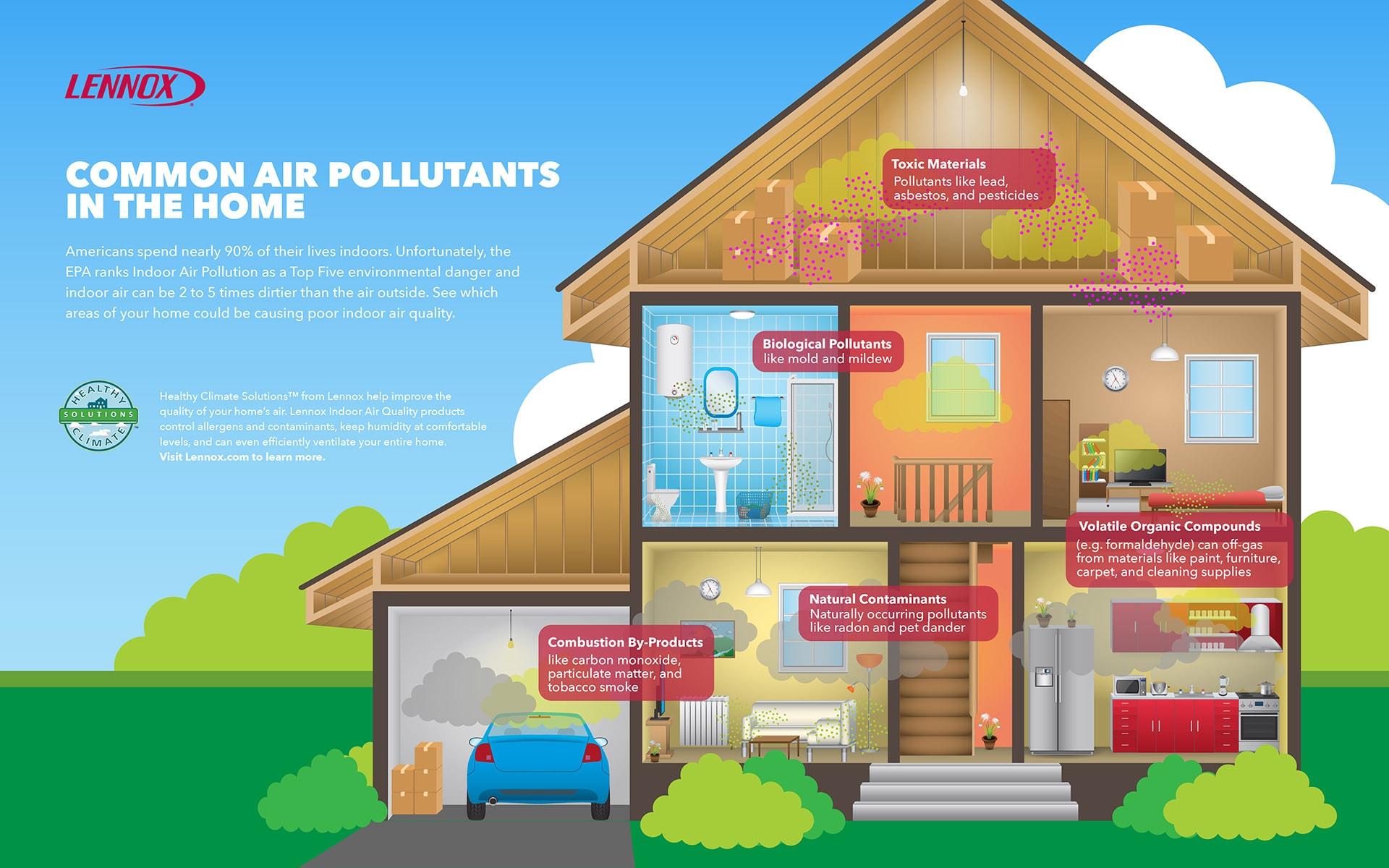Editor's Note: This post was originally published in October 2018 and has been completely revamped and updated for accuracy and comprehensiveness.
Now more than ever, homeowners are spending a lot of time thinking about the cleanliness of their home. When you think about cleaning your home, you may immediately think of sweeping the floors, wiping down counters and cleaning appliances, but when was the last time you thought about how clean the air is inside your home?
According to the Environmental Protection Agency, research shows that indoor air is often much more polluted than the air outside — and people spend about 90 percent of their time indoors. Moreover if you're like most Americans, you will probably suffer and lose at least a few days per month to head pain. According to Sweta Hari, Lennox' director of product management, poor indoor air quality (IAQ) can cause headaches, respiratory issues and other health problems, and in recent years, there's been an alarming increase in asthma and severe allergies in younger children. Poor indoor air quality is one of the most overlooked and often the easiest problems to fix in the home.
So how do you know what indoor air quality problems are impacting your home? Keep reading on how to identify air problems in the home and how you can solve them. Your local Lennox® dealer will also be ready to help your home achieve perfectly healthy air.
There are five key issues that impact indoor air quality: airborne chemicals, germs, allergens, noxious odors and humidity imbalances. Learn more about these irritants in the Houzz article titled, 5 Indoor Air Quality Problems and How to Fight Them. These common problems can easily be resolved by following the steps below:
- Invest in an air-purification system – The PureAir™ S air purification system, part of Healthy Climate Solutions™, removes over 99% of the virus that causes COVID-19* from the air**, as well as even smaller viruses, bacteria, and fungal spores. And unlike other air purification products on the market, the PureAir S system doesn't produce ozone as a by-product and even works actively to reduce this known lung irritant in your home's air***. This system is easy to install and will likely cost less than $100 a year on your energy bill. Be sure to look for a home that has a MERV value of at least 16, as this will eliminate 99% of common particulates, 90% of germs and bacteria, and 50% of chemical vapors and household odors.
- Clean your home regularly – According to the Asthma and Allergy Foundation of America (AAFA), you should vacuum your home once or twice a week to reduce indoor pollutants, and use a vacuum with a HEPA filter. There can be 40,000 dust mites in one ounce of dust, and the AAFA advises buying allergen-resistant covers for your mattresses and pillows and cleaning your pet's favorite furniture and toys regularly.
- Consider a dehumidifier – Humid air can foster the growth of mold and mildew, and make the air in your home hard to breath. If the air in your home feels heavy and sticky, it's time to add a whole-home dehumidifier. Keep your home between 40 and 50 percent humidity for maximum comfort.
- Get a smart thermostat – Install a Wi-Fi-enabled thermostat, like the iComfort® S30 ultra-smart thermostat, that monitors your home's humidity levels and air-purification-system filters. Not changing the filter regularly enough can even add bacteria. Some smart thermostats also track air quality and pollen levels in your area, turning on the purification system when levels are high. The iComfort S30 even integrates with other smart home applications like Amazon Alexa and Apple HomeKit to keep your home running efficiently.
- Ventilate your home – Air out your home as outdoor air quality allows, especially if you are cleaning, painting or doing activities that create a high level of pollutants. If the weather doesn't allow you to open windows or doors, consider a ventilation product from Lennox that keeps your home's air fresh while working efficiently.
As the seasons change and your family begins spending more time indoors, it's important to consider these tips to keep your family breathing fresh, clean air. Want to learn more about IAQ solutions for your home? Contact a Lennox® dealer to learn more and schedule a consultation today.
* Removal efficiency based on third party testing results using MS-2 bacteriophage (ATCC 15597-B1). Bacteria representative of virus-sized particles like SARS-CoV-2, the virus that causes COVID-19. November 2020.
** When used properly with other best practices recommended by CDC and others, filtration can be part of a plan to reduce the potential for airborne transmission of COVID-19 indoors.
***Based on ozone removal testing conducted by third party testing results. May 2018.


